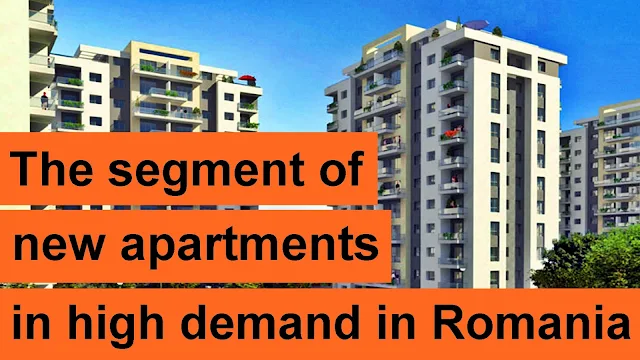Interest for the acquisition of new apartments in four years was a general upward trajectory in all major cities of the country, according to an analysis by Imobiliare.ro. The most significant increases in demand were recorded in the segment of newly built houses in cities like Timisoara tripled, which shows the rapid rise of the new market, which reached to overcome the old popularity.
However, due to financing challenges, the growth rate of demand for housing has slowed noticeably in 2016 this indicator recorded, in some cases, even slight decreases.
Bucharest
In the capital, since 2012, searches for new residences in the capital recorded an overall advance of 351% - for comparison, demand for old apartments was increased in this period by only 86%. New segment, the largest annual increase (100% from year to year) was recorded in 2015; in second place in 2013 (with a plus of 93%), while in 2014 the demand increased by 23%.
Despite the overall positive development of the two market segments in 2016 were both experienced a slight decline in search of potential buyers: -4% for new apartments and respectively -18% for the old. This can be explained by periods of waiting amid market changes occurring in the field of credit. Following these adjustments, the level of demand for the two segments of rezidenţialului Bucharest stands at an equal level, unprecedented situation before.
Braşov
In the town at the foot of Tampa, demand for newly built apartments increased steadily in the last four years, reaching an advance of 274% compared to 2012. The largest increases were recorded in 2015 (73%) and 2013 (54 %), followed by 2014 (24%) and 2016 (14%). In the same period, the interest in old housing was increased overall by only 70%; mentioned is, however, that they are passed through two years of decrease or 2014 (-10%) and 2016 (13%). Despite the different developments in the two segments, the popularity of old apartments still surpasses that of new apartments in Brasov.
Cluj Napoca
Somes is the only city on the analysis of the demand for new apartments exceeds the dwellings in old buildings throughout the period. (This can be explained by the existence of a competitive new housing, both in the city and surroundings). Therefore, increasing interest in new segment (which has a dominant status in the market) was lower than that recorded in the segment of old or 163% versus 267%. Demand for new apartments increased during 2013 (74%) and 2015 (72%), and two downward respectively in 2014 (-2%) and 2016 (-11%). Instead, interest in old buildings enrolled on a course steadily upward during that period, the largest increases occurring in 2013 (70%) and 2015 (60%) and lowest in 2014 (15%) and 2016 ( 17%).
Constanța
In the town of seafront demand for new residential segment was increased by 210% since 2012, while the oldest segment recorded an increase of 96%. Interest in new apartments recorded the biggest jumps in 2013 (74%) and 2015 (71%), while in 2014 there was an increase of 11%, and in 2016 a decrease of 7%. Instead, searches for old dwellings fell in 2014 (22%), but increased by 9% this year.
Iaşi
In the Moldovan capital, interest purchase of apartments recorded the largest variations in four years: 127% and 775% segment Old segment again (leap explained, in part, and the huge increase in the volume of deals). Interestingly, if 2014 growth of both segments was relatively close, 2015 new residential market has seen an advance of 203%, managing to exceed demand for the old. After an addition of 8% and maintained the supremacy of new apartments this year, while the interest in old apartments decreased by 16%.
Timișoara
In the town of Bega searches segment of potential buyers of apartments have increased steadily since 2012, both in the segment of new and the old - but the first recorded a higher advance or 344% versus 216%. The most significant increases in interest for new apartments took place in 2015 (91%) and 2013 (61%), while 2016 brought a mere 4%. Old segment, the biggest jump, 85%, occurred in 2013; this year but demand increased by only 17% (compared to 37% in 2015).
